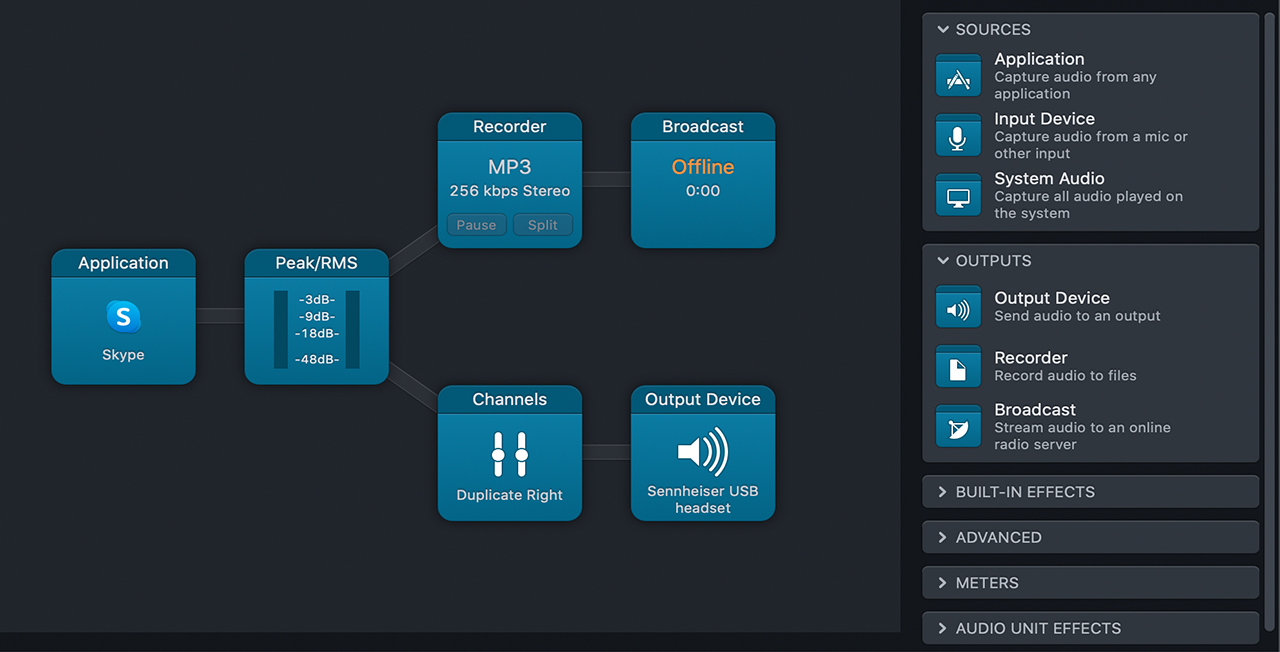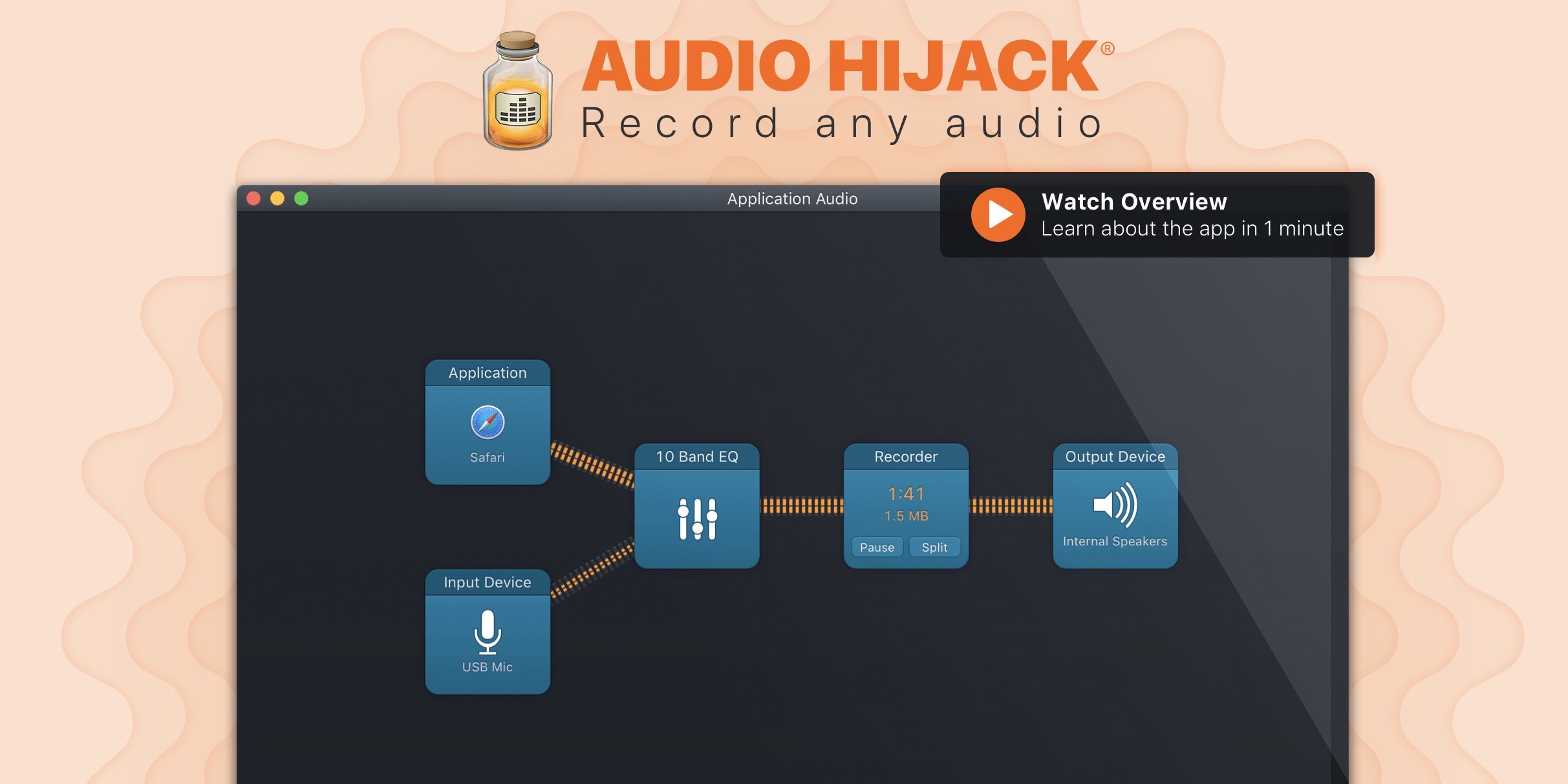One of Audio Hijack’s most popular uses is to capture audio from voice chat (or VoIP) applications, particularly Skype. We’ve made this easy to do with the Voice Chat Session template. Voice Chat Recording Basics. To get started, choose 'New Session' in Audio Hijack to access the Template Chooser, then select the 'Voice Chat' template. Audio Hijack Pro users will recall being able to accomplish this by tweaking the audio device buffers. With Audio Hijack 3, Rogue Amoeba completely reworked the interface from Audio Hijack Pro. Audio Hijack (was Audio Hijack Pro) drastically changes the way you use audio on your computer, giving you the freedom to listen to audio when you. May 30, 2015 Featured / Social Networking.
Summary
On December 23, 2019, Airfoil for Windows was retired. The product is no longer in development, nor available for purchase. While Airfoil for Windows will likely continue to work for some time to come, it is now officially unsupported. We regretfully recommend that users find alternate solutions for streaming audio from their Windows PCs.
Users who previously purchased may download the last version of Airfoil for Windows from our Legacy page.
More Details
The first version of Airfoil for Mac was released in 2005, and we quickly heard from many Windows users requesting a version for their platform as well. Though Rogue Amoeba has always been a Mac-focused software company, it was clear that we were uniquely suited to help folks on Windows stream audio around the home. We thus worked hard to create a high-quality Windows version of Airfoil, and the first version shipped in May 2006, a little over a year later.
Over the next 13 years, across dozens of updates, we made it possible to stream from PCs to the AirPort Express, Apple TV, third-party AirPlay hardware, Bluetooth outputs, and Chromecast devices. At the end of 2019, however, the time came to retire Airfoil for Windows.
Audio Hijack Pro
There were several factors which led to this decision, but the most important was the drop in sales we'd seen on the Windows platform. Download java 8 in mac. Sales had slowed substantially in recent years, in no small part due to a move by Windows users to stream audio via mobile devices, rather than from their desktops or laptops. While Airfoil for Mac still enjoys heavy usage, Airfoil for Windows is now less essential to users than it has been in the past, and that's a trend that’s not likely to reverse. In recent years, sales of Airfoil for Windows have fallen below an acceptable threshold.
This was not a capricious decision, and after more than thirteen years of development, we are sad to leave users behind. We did good work on Airfoil for Windows, and we're proud to have served our Windows users well for over a decade. Nevertheless, the time has now come for us to move on. We hope those who used Airfoil for Windows can find other solutions for streaming audio.
A Note on Airfoil Satellite for Windows
The Airfoil Satellite for Windows app turns any PC into an audio receiver, so audio can be streamed to it from Airfoil.
Airfoil Satellite for Windows remains in development, as part of our suite of complimentary Airfoil Satellite apps.
One of Audio Hijack’s most popular uses is to capture audio from voice chat (or VoIP) applications, particularly Skype. We’ve made this easy to do with the Voice Chat Session template.
Voice Chat Recording Basics
To get started, choose 'New Session' in Audio Hijack to access the Template Chooser, then select the 'Voice Chat' template. This template provides a setup specifically designed for recording voice chats. Both halves of a conversation are recorded, but you'll only hear the remote party in your headphones.

The Voice Chat template
You'll notice that this template sends audio to two outputs in parallel: a Recorder Block and an Output Device Block. The audio sent to the output device is adjusted with the Channels effect, which duplicates the remote audio (on the right channel) into both ears, so your own audio is not played back to you. This won't affect your recording, only the audio you hear as you chat.
Audio Hijack

Using Headphones When Recording Voice Chat
To prevent echo and feedback loops in the audio, all parties should wear headphones when using voice chat applications. You've likely seen radio DJs with closed-ear headphones on, which they wear to prevent the audio they're hearing from leaking in to their microphone. The same idea applies to your voice chats. You want to isolate the other party out of your microphone.
In an attempt to make it possible to chat without headphones, some voice chat applications like Skype do rudimentary noise cancelling. However, this tends to be unreliable, in particular when recording with Audio Hijack.
Be sure to use headphones when recording voice chat with Audio Hijack.
Advanced voice chat settings
When a supported voice chat app is set as your source, Audio Hijack will automatically configure it for optimal recording. It does two things:
1) Pulls in audio from both the remote party and from the microphone you're using with Skype. This is controlled by the 'Include audio input' setting in the Advanced options for the Application Block.

2) Splits audio into two channels, placing the local audio (you) on the left, and the remote audio (the other party or parties) on the right. This is controlled by the 'Split between channels' setting, also in the Advanced options for the Application Block.
Mac java se 6 download.
Default settings for voice chat apps
This setup reflects what's most commonly desired, but you can always adjust it by changing the Advanced settings, pictured above.
For a full list of automatically supported voice chat applications, see this page.
Skype 8 volume issues
Audio Hijack 2
Skype version 8 made significant changes to the way volume levels are handled, and now adjusts its volume in a non-standard fashion. As a result, audio captured from Skype may playback via Audio Hijack at a reduced level. To fix this, a Volume block can be placed just before the Output Device node in Audio Hijack, then adjusted to restore the original playback volume.
Only local playback while chatting may be affected. Audio Hijack automatically ensures that audio is recorded from Skype at the correct level.
Audio Hijack Windows
← Audio Hijack Support